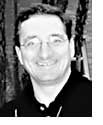The Eichler Homeowners

Stylishly modern in appearance and built in the burgeoning postwar suburbs of the Bay Area, the Eichlers have seemed to many to embody the spirit of the emerging postwar California culture. The Eichler architecture indeed indicated a fresh approach to tract development, and the quick success of the earliest tracts proved there was an eager market for them. However, the market for Eichlers was never huge. Joseph Eichler never achieved the scale of more notable developers, such as William Levitt on the East Coast, for instance, who sold homes in the tens of thousands to first-time buyers at exactly the same time as Eichler was building his tracts of one or two hundred. Eichler's homes were so different from other suburban houses that his market niche was actually quite small. In fact, it is likely that if he had built any faster than he did—a thousand per year at the height of his success—he probably would have outpaced the number of people interested in his high-styled bungalows.
 Who then were the Eichlers appealing to, and what did they find in Eichler subdivisions that they could not find elsewhere? Certainly the cost was reasonable. The affordability of the Eichlers accounted for some of the early sales, when returning veterans could take advantage of low-interest loans and buy Eichler's houses for very little initial investment. This made for dedicated residents, some of whom remain in the same houses almost 50 years later—families grown, retired, and still happy to recall their good fortune. A case in point was the man we met one day while photographing Greenmeadow, in Palo Alto. Initially wary when he first saw us snooping around with our camera, he was reassured when he was told of our research. Now in his seventies, he said he had purchased his house in 1953 without even a down payment. However, as we talked, it was the community that he emphasized. He had become a neighborhood activist, and was evidently proud of his home and keenly loyal to his distinctive neighborhood, where, he explained, there was a pervasive and earnestly felt community spirit.
Who then were the Eichlers appealing to, and what did they find in Eichler subdivisions that they could not find elsewhere? Certainly the cost was reasonable. The affordability of the Eichlers accounted for some of the early sales, when returning veterans could take advantage of low-interest loans and buy Eichler's houses for very little initial investment. This made for dedicated residents, some of whom remain in the same houses almost 50 years later—families grown, retired, and still happy to recall their good fortune. A case in point was the man we met one day while photographing Greenmeadow, in Palo Alto. Initially wary when he first saw us snooping around with our camera, he was reassured when he was told of our research. Now in his seventies, he said he had purchased his house in 1953 without even a down payment. However, as we talked, it was the community that he emphasized. He had become a neighborhood activist, and was evidently proud of his home and keenly loyal to his distinctive neighborhood, where, he explained, there was a pervasive and earnestly felt community spirit.
Good community was part of the original Eichler idea, and Eichler's subdivisions developed a sense of togetherness in ways that were both planned and spontaneous. The layouts were consciously composed to define a particular place, and this formal unity helped grow social bonds. A. Quincy Jones, Eichler's second architect, was particularly intent upon cultivating a basis for community with his designs, and pursued that goal in his first subdivision for Eichler, the 1952 Ladera Project in Portola Valley. 'Arts & Architecture' magazine published the subdivision and praised its "intelligent approach to the development of the community in terms of its people." At Greenmeadow, where Jones collaborated with Eichler's other architects, Anshen and Allen, the designers went the next step toward community planning by including the shared community center, and Eichler further formalized the neighborhood's interconnectedness by instituting joint ownership in the recreation center, and park—an early manifestation of the Planned Unit Development concept. A feeling of community spirit grew up around the idea of shared investment, still a new idea in the early 1950s and '60s, but also around the less tangible issue of style.




